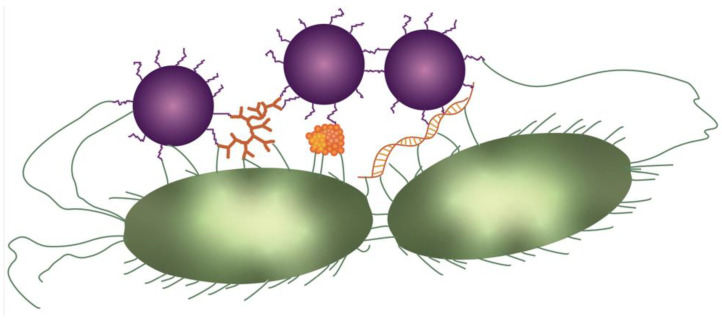Figure 2.
Coaggregation. During coaggregation, genetically distinct bacteria (here depicted in purple and green) can form aggregates by physically binding to each other through specific molecules, including exopolysaccharides, proteins and eDNA (depicted in orange). The physical interaction is facilitated by cellular appendages including pili, flagella and fimbriae, as well as extracellular molecules.

